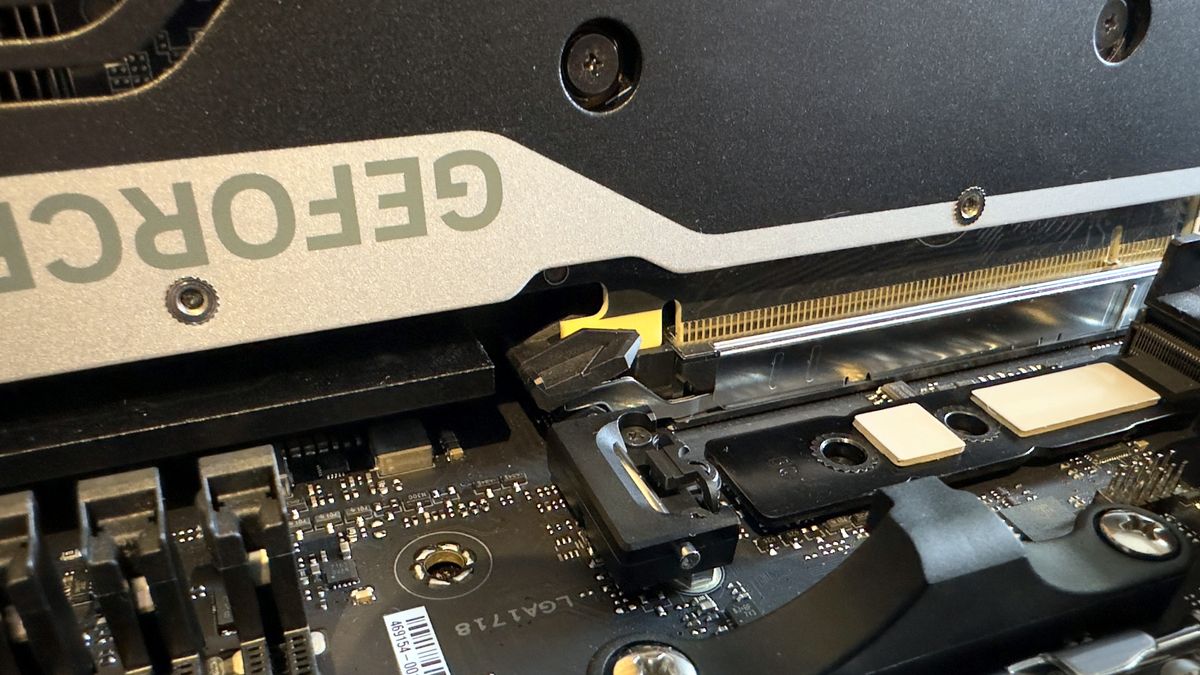
Asus offers several alternative GPU-securing mechanisms as part of its Q-release system, but concerns have been raised about one variant potentially damaging GPU contact pins.
One of the main issues reported by users involves the traditional GPU retainer clip, which is often difficult to reach, especially with larger graphics cards, and can lead to sore fingers and frustration.
A proposed solution involves a quick-latch system that simplifies the process, yet a post by the user on social media drew attention to a design used on certain Asus motherboards that might damage graphics cards under frequent usage.
Users on Bilibili discussed the potential impact and shared experiences of using the latch design. In particular, concerns were raised regarding the stress placed on the contact pins during insertion and removal of GPUs, which could lead to wear over time.
Despite warnings, reports indicate that some users have not encountered significant wear despite utilizing this release system.
It’s anticipated that Asus may need to make adjustments to the design to prevent potential damage, although casual users who swap GPUs infrequently may not experience major issues. The community awaits further feedback from Asus regarding this concern.
As a general note, while all PCIe slots exert some resistance on contact pins, it is unclear how competitive the ratings for wear are compared to traditional mechanisms. Many builders may find clear guidelines or user experiences valuable as they navigate these hardware nuances.
